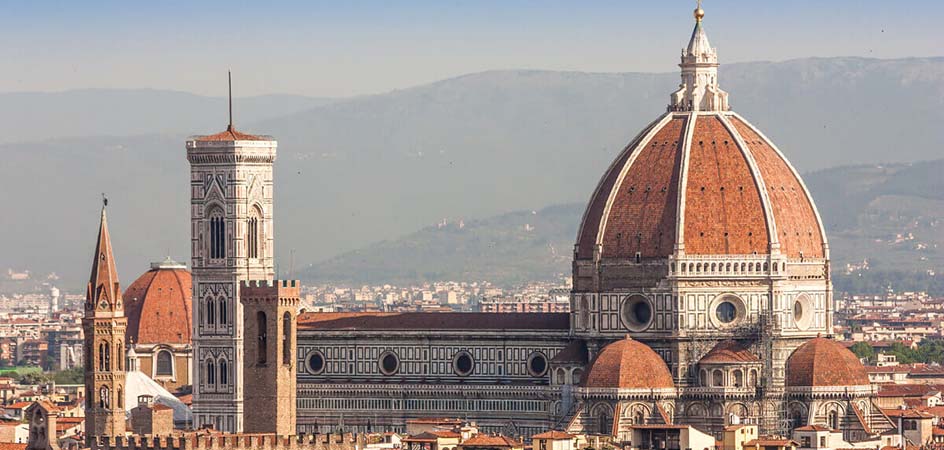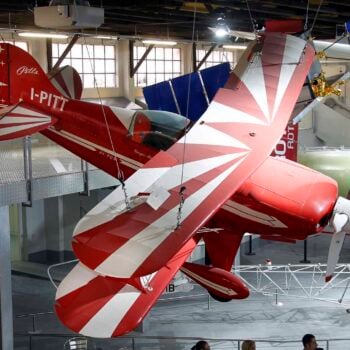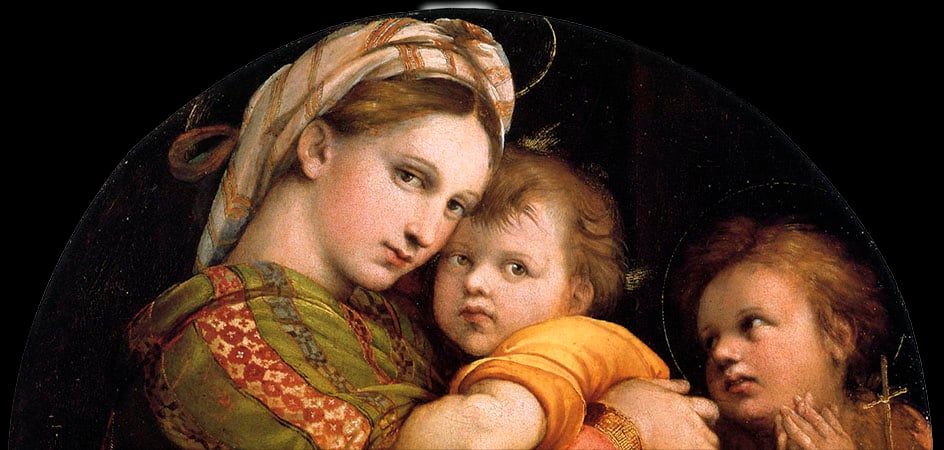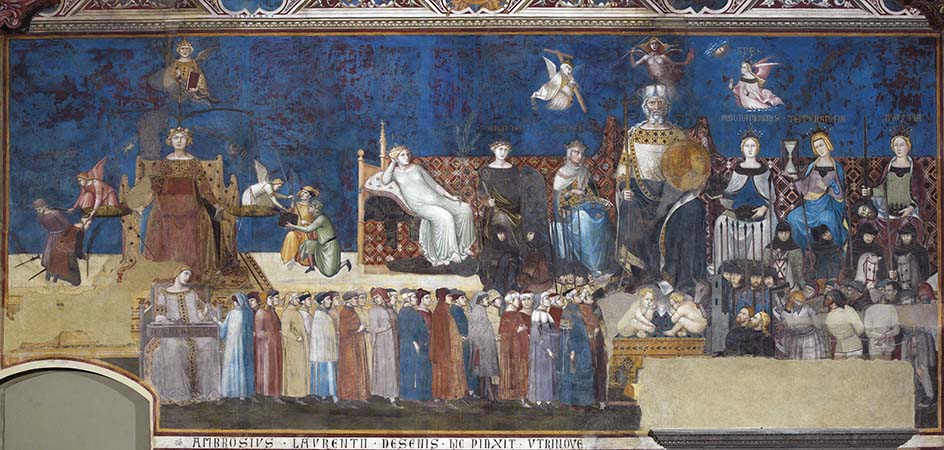An emblem of Florence, the dome of Santa Maria del Fiore towers over the city and, six centuries after its construction, still dazzles with its unsurpassed grandeur. Indeed, it remains the largest masonry dome ever built – a testament to the brilliance of Filippo Brunelleschi, a visionary architect with a fiery temperament.
At the time of its construction, few would have bet on the project’s success, which – according to Vasari¹ – nearly failed on multiple occasions…
The problem of the dome
Construction on the cathedral began at the end of the 13th century under a design by Arnolfo di Cambio (1245–ca. 1302/1310). The building was enlarged in the mid-14th century, but by 1400 it was still incomplete. The huge dome intended to surmount Arnolfo’s octagonal presbytery area was missing, since he had died without leaving any drawings or written directions for its construction. Patrons, craftsmen, and citizens alike had been puzzling over how to finish it for some time.
This was no small problem: closing the dome would require wooden support structures unlikely to bear its weight. Moreover, gathering all that timber would mean deforesting entire regions.
So how could they finally complete the city’s cathedral?
Are you interested in articles like this?
Sign up for the newsletter to receive updates and insights from BeCulture!
Brunelleschi, a “madman” with a clear vision
Filippo Brunelleschi was born in 1377 in Florence and trained as a goldsmith, quickly standing out for his intellectual vitality and architectural talent.
A close friend of Donatello, he traveled with him to Rome, where they spent their time studying and copying classical antiquities at length for instruction and inspiration.
Brunelleschi was firmly determined to find a way, as Vasari puts it, to “turn the dome” of Santa Maria del Fiore.
Driven by this goal, he often visited the Pantheon, spending days measuring and analyzing, oblivious even to hunger and sleep.
Convinced he had the solution, he returned to Florence. Yet earning the trust of the Operai dell’Opera di Santa Maria del Fiore and the Consoli dell’Arte della Lana – who oversaw the project – was difficult. His impulsive manner nearly ruined his chances.
The 1420 assembly
His opportunity arose in the spring of 1420, when a public assembly was called to consider proposals from both local and foreign architects.
There was no shortage of ideas, some quite peculiar: one person even suggested filling the church with a mountain of dirt (to use as a support during dome construction) and hiding gold coins in it, letting citizens – tempted by the reward – haul it away afterward.After hearing them all out, Brunelleschi spoke: in his view, they could complete the dome without dirt, without pillars, and even without wooden scaffolding – simply by building a double shell. This bold claim provoked laughter; Filippo grew so enraged that he had to be carried off, having been deemed mad.
The egg test
However, it wasn’t long before the same patrons reconsidered and brought Brunelleschi back, as he kept insisting he was certain of his method.
This time, he put them on the spot: he took an egg and challenged the other architects to stand it upright on a flat surface. Their attempts were in vain. When they asked him to do it himself, he gently tapped one end of the egg, cracking it just enough so it stood upright.No further proof of Brunelleschi’s ingenuity was needed. He finally secured the commission, but his troubles were far from over.
The rivalry with Ghiberti
As famous as the one between Leonardo and Michelangelo, the hostility between Brunelleschi and Lorenzo Ghiberti (1378–1455) dated back to their competition to design the Battistero of Florence East doors.
We can only imagine Filippo’s fury when, due to his supposed inexperience, he was forced to share the position of foreman with his archenemy – who would also be paid three florins, the same as Brunelleschi.
Proud and impetuous, Brunelleschi considered walking away from it all and leaving Florence, but Donatello and Luca della Robbia persuaded him to stay.
In 1420, the first stone of the dome was laid under Brunelleschi’s supervision. He oversaw everything: designing scaffolding, inspecting materials, training and directing the workers, even having a kitchen set up on site to serve soup and wine so that breaks would be kept to a minimum.
Although consumed body and soul by this years-long project, he couldn’t abide the (rare and nearly irrelevant) presence of Ghiberti.
Determined to rid himself of his rival, Brunelleschi devised a plan to shut Ghiberti out once and for all.
At the most critical moment of construction, Brunelleschi feigned illness and stayed home for days. Work stopped, and the worried laborers, unable to carry on without him, went to visit him. There, Filippo took his first jab at Ghiberti, hinting that it was obvious Lorenzo couldn’t finish the job – while he himself certainly could, even without his colleague.
Back on site, he landed the final blow: he asked Ghiberti if he wanted to handle the scaffolding design or the iron chains needed to hold the dome together. Ghiberti chose the chains, but his models didn’t hold. Brunelleschi gladly took over and fixed them. This was the proof he needed to show everyone that he alone was the real master builder. With Ghiberti effectively sidelined, Brunelleschi resumed full control of the project.
Nevertheless, Ghiberti remained on the payroll for another three years, until 1426 – some say out of Brunelleschi’s own magnanimity.
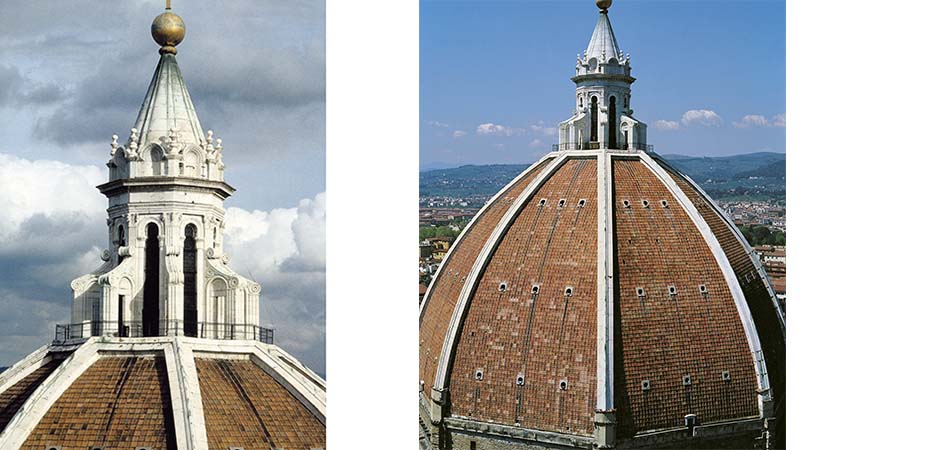
Brunelleschi’s dome: a model of engineering and beauty
Construction lasted sixteen years, and the dome – rising 90 meters from the ground to the keystone – was completed in 1436.
Brunelleschi’s plan, using stone and brick, relied on a self-supporting “herringbone” system that required no wooden framework. This technique was later adopted for many other domes.
The octagonal base was covered by two pointed shells, one inside the other, connected and divided into eight segments. The exterior surfaces are marked by the now-iconic white marble ribs that converge at the oculus at the top, where the 21-meter lantern stands, crowned by Verrocchio’s golden ball.
Between the two shells, 463 steps lead visitors to the summit to enjoy a breathtaking view of the city.
Brunelleschi died in 1446, before he could see the dome fully completed: the lantern, built to his design, was finished about twenty years later.
“And it can be said with certainty that the ancients never rose so high with their buildings nor took on such a great risk as though they intended to do battle with the heavens; it truly seems that it does so: to see it soar to such heights that the mountains around Florence seem to match it. And in truth, it appears that the sky envies it, since bolts of lightning constantly strike it all day long”. Despite Vasari’s dramatic flair, there is an element of truth in his words.
One last story worth mentioning also concerns the elements. On April 5, 1492, lightning struck the lantern, largely destroying it. The event was taken as a sign foreshadowing the death of Lorenzo il Magnifico, which happened just three days later. The same thing occurred in 1601, causing the 19-quintal golden ball to fall and damage the lantern again. To this day, a circular white marble slab on the piazza’s pavement shows where the ball landed. Before putting it back in place, Grand Duke Ferdinando II had relics placed inside it, hoping for divine protection.
Whether that truly safeguarded Brunelleschi’s Dome from then on, we’ll never know. In any case, it has remained intact, rising majestically and beautifully above the city, welcoming Florentines and visitors alike, and paying homage to the ingenuity and tenacity of its brilliant “inventor”.
1 An artist, architect, and writer at the Medici court, Giorgio Vasari (1511–1574) was also the author of Le vite de’ più eccellenti architetti, pittori, et scultori italiani, da Cimabue insino a’ tempi nostri (published in 1550 and 1568, with additions), a foundational work in the history of Italian art.


